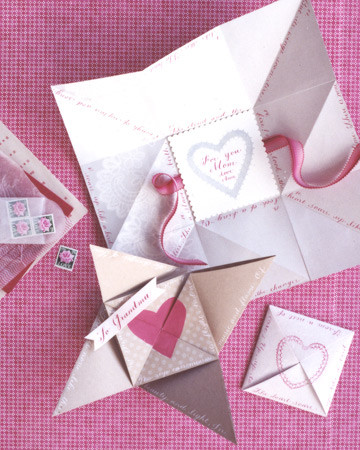

Make the Antique-Style Valentine
It represents a sweet little metaphor: Open your heart to love.
Puzzle purses — popularized in the Victorian era — actually have their origins in origami, the Japanese art of folding paper, in which they’re known as “tato,” or flat boxes. A square sheet of decorative paper is folded into a polygonal purse and can be used to store small, loose items such as buttons, pins, and paper clips.
As early as the 1700s, young lovers began exchanging puzzle purses as Valentines. To construct them, the envelopelike packet was folded diagonally, then vertically, repeatedly into a grid of nine smaller squares, and then collapsed into a four-pointed pinwheel shape. By folding back the panels — one at a time, in sequential order — a romantic message was conveyed either through the verses of a poem or symbolic images of love.
Perhaps most beautifully, puzzle purse Valentines are remnants of a bygone era when romance was admired as a formal art. There was great ritual surrounding courting — a couple would dance together, take leisurely walks, and get to know each other. It was in that cultural context that young Victorians were enamored with the pretty paper, the artistry of the pictorials, and the dramatic revealing of the square in the center that said, “I love you.”
SOURCE:http://www.marthastewart.com/1099224/decorative-past-puzzle-purse-valentine